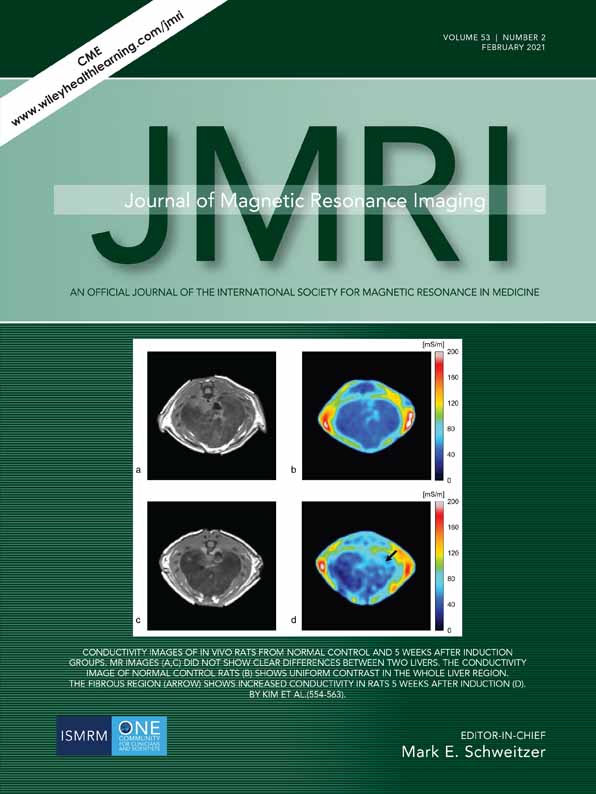Altered Dynamic Functional Connectivity in Patients With Mitochondrial Encephalomyopathy With Lactic Acidosis and Stroke-Like Episodes (MELAS) at Acute and Chronic Stages: Shared and Specific Brain Connectivity Abnormalities
Rong Wang and Chong Sun contribute equally to this study.
Contract grant sponsor: Science and Technology Commission of Shanghai Municipality; Contract grant numbers: 17411953700, 19ZR1407900.
Abstract
Background
Mitochondrial encephalomyopathy with lactic acidosis and stroke-like episodes (MELAS) is a rare maternally inherited genetic disease; however, little is known about its underlying brain basis. Furthermore, the dynamic functional connectivity (dFC) of brain networks in MELAS has not been explored.
Purpose
To investigate the abnormalities of dFC in patients with MELAS at the acute and chronic stages, and to determine the possible relations between dynamic connectivity alterations and volumes of stroke-like lesions (SLLs).
Study Type
Prospective.
Subjects
Twenty-two MELAS patients at the acute stage, 23 MELAS patients at the chronic stage, and 22 healthy controls.
Field Strength/Sequence
Single-shot gradient-recalled echo planar imaging (EPI) sequence at 3T.
Assessment
Dynamic FC states were estimated using the sliding window approach and k-means clustering analyses. Combined with graph theory, the topological properties of the dFC network were also accessed.
Statistical Tests
Permutation test, Pearson correlation coefficient, and false discovery rate correction.
Results
We identified four dFC states and found that MELAS patients (especially at the acute stage) spent more time in a state with weaker connectivity (state 1) and less time in states with stronger connectivity. In addition, volumes of acute SLLs were positively correlated with mean dwell time in state 1 (r = 0.539, P < 0.05) and negatively correlated with the number of transitions (r = −0.520, P < 0.05). Furthermore, MELAS patients at the acute stage exhibited significantly increased global efficiency (P < 0.01) and decreased local efficiency (P < 0.001) compared to the controls and the patients at the chronic stage. Patients at the chronic stage only showed significantly (P < 0.001) decreased local efficiency compared to the controls.
Data Conclusion
Our findings suggest similar and distinct dFC alterations in MELAS patents at the acute and chronic stages, providing novel insights for understanding the neuropathological mechanisms of MELAS.
Level of Evidence 2
Technical Efficacy Stage Stage 2
J. MAGN. RESON. IMAGING 2021;53:427–436.
Conflict of Interest
The authors declare that they have no conflicts of interest.




